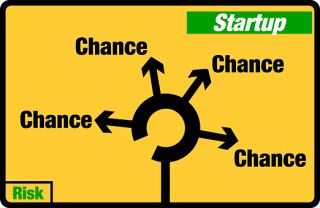Sensation-Seeking
Risk-Taking and the Creative Workplace
The more risks we're willing to take at work, the more creative we become.
Posted February 3, 2023 Reviewed by Devon Frye
Key points
- Risk-taking is a natural and normal part of personal development.
- There are several workplace barriers that shield us from taking risks.
- Embracing risk-taking in the corporate world is a critical part of the creative process.
Let’s take a trip to England and sit near one of the playgrounds in the suburbs of London. Look around and you’ll see something quite different than in U.S. playgrounds. Here, the playground equipment is a little edgier, a little more “dangerous.” You’ll see taller climbing poles, higher slides, and faster merry-go-rounds. This new, tougher equipment is in response to playground environments that are viewed as being just a little too safe, driven by adults who worry that today's children are less able than their predecessors to handle risk.
A Risk-Averse Culture
Apparently, Britain’s embrace of a risk-averse culture goes far beyond the creation of safe playgrounds. One nonprofit organization is so concerned about England’s low tolerance for risk that it has established a special commission to examine what it perceives to be a critical issue in the overall health of the country.
Their mission is supported by an expanding bank of research on why risk-taking can be a good thing. Psychiatrist Srini Pillay, writing in the Harvard Business Review, points out that the term “risk” often has inherently negative connotations. As a result, we are often inclined to eschew risk-taking for fear of “striking out.”
Yet, as Pillay clearly points out, “…[making a] conscious effort to remember that risk-taking may be adaptive and may even lead to positive outcomes” helps us learn how to adapt to a world in constant flux. The implication is that without an embrace of risk-taking, there is no growth, either from an individual standpoint or from a corporate perspective.
Taking risks is essential for our overall growth and development. We all took some risks when we learned how to walk. By the same token, we took a risk when we got our driver’s license and took the family car out for a spin, and many of us took a risk when we joined up with another individual and said that we would spend the rest of our life with this person (“Till death do us part.”). I think we can agree that taking risks is an essential element in our learning curve.
Yet, what we practice in the corporate world is often altogether different. It’s similar to the way parents “monitor” their children on a playground: “Don’t do that or you might get hurt.” Minimize the risk, and you can minimize the potential hurt.
But what results is often stunted creative expression. Innovation is all about taking a chance; all about venturing into unfamiliar territories with the possibility of discovering something new or something different. That’s not possible without some risk-taking.

Taking a Chance
“Playing it safe” or “same old, same old” is the way many companies minimize loss by limiting risk-taking. When you don’t take a risk, you systematically avoid making mistakes—and lots of mistakes cost lots of money.
It’s much easier and less risky to do things the way they’ve always been done in the past. “It was proven successful then, surely it must be equally successful now. Why change? “Why take a chance?”
This certainly makes sense from a logical standpoint, but it places unnatural hurdles in the way of creative progress. It restricts the generation and implementation of creative ideas—new ideas essential to progress. When we adhere to the same routines and standards used in the past, we prevent innovation; we restrict creativity. In short, if employees are forced to stay within existing mental boundaries, they will be less inclined to move beyond those practices… and less inclined to exercise their creative powers.
When companies kill creativity, they devalue risk-taking as an opportunity for employees to try something new. Often those new ideas fail, but even those failures offer unique opportunities to see what doesn’t work, what can be learned from those failures, and how those failures might influence the development of future ideas.
CEO Gustavo Razzetti notes, “Most companies don’t lack ideas, but a conducive culture that helps them see the light of day.” In essence, it’s not the creation of ideas that is the issue, but rather the absence of an environment that encourages and supports the generation of multiple ideas (the good, the bad, and the ugly) in concert with a corporate philosophy that embraces the need for risk. Creative thinking works best when risk-taking is a significant part of the process.
An aversion to risk-taking also has another consequence: a tendency to micro-manage an organization. Close and careful monitoring of every aspect of a company, in logic, keeps a “handle” on what is happening and how well it is happening. But it also has a negative impact on creative advancement.
Creativity involves the freedom to move into uncharted territories and unfamiliar vistas. When workers feel that someone is “looking over their shoulder,” they are less inclined to venture into unknown spheres or expanses. They are less inclined to come up with a new craft, a new direction, or a new map that opens up creative vistas. They feel constrained, not only in what they do but, more importantly, in what they could do. Their creative spirit is manacled and their sails sufficiently trimmed that they seldom venture outside their safe harbor and into uncharted seas.
References
.Pillay, Srini. “A Better Way to Think About Risk.” Harvard Business Review. (December 23, 2014).
Razzetti, Gustavo. “Why Your Company Culture is Killing Creativity (And How to Fix It).” Fearless Culture. (April 7, 2021).
Fredericks, Anthony D. From Fizzle to Sizzle: The Hidden Forces Crushing Your Creativity and How You Can Overcome Them. (Indianapolis, IN: Blue River Press, 2022).




